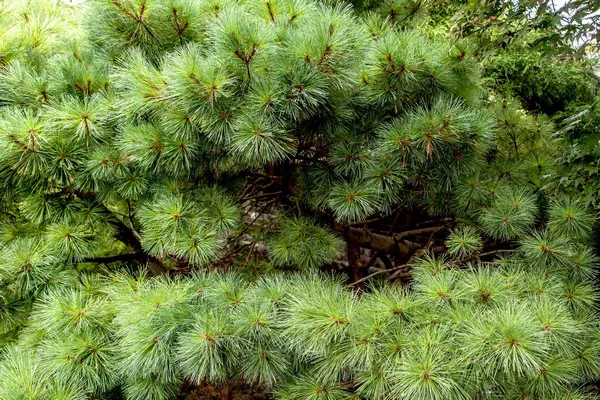Pine trees are iconic symbols of North American landscapes, known for their towering stature, aromatic scent, and ecological importance. From the eastern forests to the western mountains, pine species play a vital role in shaping the biodiversity and beauty of the continent. In this article, we embark on a journey to explore the 13 most common North American pine species, delving into their unique characteristics, habitats, and ecological significance. Through a meticulous examination of their distribution, morphology, and ecological roles, we aim to celebrate the diversity and importance of these emblematic trees in North American ecosystems.
13 Most Common North American Pine Species
1. Eastern White Pine (Pinus strobus)
The Eastern White Pine stands tall as one of the most iconic and widespread pine species in North America, inhabiting the forests of eastern Canada and the northeastern United States. Recognized for its towering stature, soft blue-green needles, and distinctive white bark, the Eastern White Pine dominates the canopy of mixed deciduous-coniferous forests and thrives in a variety of soil types and moisture conditions. As a keystone species, it provides habitat for numerous wildlife species, stabilizes soil erosion, and contributes to the ecological integrity of its native habitat.
2. Ponderosa Pine (Pinus ponderosa)
Stretching across the western United States, from the Rocky Mountains to the Sierra Nevada, the Ponderosa Pine commands attention with its massive trunk, cinnamon-red bark, and clusters of long, slender needles. This iconic pine species thrives in a variety of habitats, from montane forests to grassland ecosystems, and plays a crucial role in shaping the biodiversity and resilience of western landscapes. Valued for its rapid growth and valuable timber, the Ponderosa Pine is revered for its ecological importance and cultural significance among indigenous peoples and settlers alike.
3. Lodgepole Pine (Pinus contorta)
Adaptable and resilient, the Lodgepole Pine is renowned for its ability to thrive in a variety of habitats, from coastal regions to subalpine forests, across western North America. Characterized by its twisted branches, serotinous cones, and dense stands known as “lodgepole thickets,” this hardy pine species plays a vital role in ecosystem succession and regeneration following disturbances such as wildfires and clear-cut logging. As a pioneer species, the Lodgepole Pine colonizes barren landscapes, stabilizes soils, and creates habitat for a diverse array of wildlife species.
4. Jeffrey Pine (Pinus jeffreyi)
Endemic to the rugged mountains of the Sierra Nevada and the Great Basin region of California, Nevada, and Oregon, the Jeffrey Pine captivates with its distinctive vanilla-scented bark, long, slender needles, and robust, straight trunk. Often mistaken for its close relative, the Ponderosa Pine, the Jeffrey Pine thrives in dry, rocky soils and montane habitats, contributing to the biodiversity and resilience of western forests. Renowned for its valuable timber and cultural significance among indigenous peoples, the Jeffrey Pine holds a special place in the hearts and landscapes of the American West.
5. Longleaf Pine (Pinus palustris)
Stretching across the southeastern United States, from Virginia to Texas, the Longleaf Pine stands tall as a symbol of resilience and endurance in the fire-adapted ecosystems where it thrives. Recognized for its towering stature, distinctive needle-like leaves, and imposing presence, the Longleaf Pine plays a vital role in shaping the biodiversity and cultural heritage of the southeastern forests. Valued for its valuable timber, unique ecology, and cultural significance among indigenous cultures, the Longleaf Pine holds a special place in the hearts and landscapes of the American South.
6. Shortleaf Pine (Pinus echinata)
Widely distributed across the southeastern United States, from Texas to New Jersey, the Shortleaf Pine thrives in a variety of habitats, from dry upland forests to moist bottomlands. Characterized by its short, flexible needles, plated bark, and slender, straight trunk, the Shortleaf Pine is valued for its rapid growth, durable timber, and ecological importance in southern forests. As a pioneer species, it plays a crucial role in ecosystem succession and regeneration following disturbances such as wildfires, logging, and land clearing.
7. Virginia Pine (Pinus virginiana)
Endemic to the eastern United States, from New York to Georgia, the Virginia Pine is renowned for its ability to thrive in a variety of habitats, from dry upland forests to disturbed landscapes. Characterized by its twisted branches, short, stout needles, and distinctive orange-red bark, the Virginia Pine is a hardy pioneer species that colonizes barren landscapes, stabilizes soils, and creates habitat for a diverse array of wildlife species. Valued for its rapid growth and adaptability, the Virginia Pine plays a vital role in shaping the biodiversity and resilience of eastern forests.
8. Pitch Pine (Pinus rigida)
Inhabiting the coastal regions of eastern North America, from Maine to Georgia, the Pitch Pine thrives in a variety of habitats, from sandy coastal plains to rocky upland forests. Characterized by its twisted branches, dark-green needles, and resinous cones, the Pitch Pine is a resilient survivor that tolerates harsh coastal conditions, salt spray, and sandy soils. Valued for its rugged beauty and ecological importance, the Pitch Pine plays a vital role in shaping the biodiversity and resilience of coastal ecosystems and provides habitat for numerous wildlife species.
9. Whitebark Pine (Pinus albicaulis)
Adapted to the extreme environments of high mountain ecosystems, the Whitebark Pine thrives in the subalpine and alpine regions of western North America, from British Columbia to California. Characterized by its twisted branches, needle-like leaves, and large, wingless seeds, the Whitebark Pine plays a vital role in shaping the biodiversity and resilience of alpine ecosystems. Valued for its ecological importance, the Whitebark Pine provides habitat for a diverse array of wildlife species, including grizzly bears, Clark’s nutcrackers, and red squirrels, and contributes to soil stabilization and water retention in high mountain environments.
10. Sugar Pine (Pinus lambertiana)
Dominating the forests of the western United States, from Oregon to California, the Sugar Pine commands attention with its massive size, long, slender needles, and distinctive cones that can reach up to two feet in length. Recognized as the largest pine species in the world, the Sugar Pine is valued for its towering stature, valuable timber, and ecological importance in western forests. As a keystone species, it provides habitat for numerous wildlife species, including red squirrels, black bears, and woodpeckers, and contributes to the biodiversity and resilience of its native habitat.
11. Red Pine (Pinus resinosa)
Native to the northern regions of North America, from Minnesota to the Maritime provinces of Canada, the Red Pine thrives in a variety of habitats, from dry upland forests to moist lowland swamps. Characterized by its straight trunk, orange-red bark, and clusters of long, slender needles, the Red Pine is valued for its rapid growth, valuable timber, and ecological importance in northern forests. As a pioneer species, it colonizes barren landscapes, stabilizes soils, and creates habitat for a diverse array of wildlife species.
12. Jack Pine (Pinus banksiana)
Stretching across the boreal forests of North America, from Alaska to Newfoundland, the Jack Pine thrives in harsh, northern climates and nutrient-poor soils. Characterized by its twisted branches, short, stout needles, and serotinous cones that require fire to release their seeds, the Jack Pine is a hardy survivor that tolerates extreme temperatures, high winds, and wildfires. Valued for its ecological importance, the Jack Pine provides habitat for numerous wildlife species, stabilizes soils, and contributes to the resilience of northern ecosystems.
13. Eastern White Pine (Pinus strobus)
As the only pine species to appear twice on this list, the Eastern White Pine deserves special mention for its widespread distribution and ecological importance in eastern North America. From the mixed deciduous-coniferous forests of Canada to the coastal plains of the southeastern United States, the Eastern White Pine thrives in a variety of habitats and plays a vital role in shaping the biodiversity and resilience of eastern landscapes. Valued for its rapid growth, valuable timber, and cultural significance, the Eastern White Pine holds a special place in the hearts and landscapes of people across the continent.
See Also: 6 Most Common Hanging Plants
Conclusion:
In conclusion, the 13 most common North American pine species represent a diverse array of trees that embody the beauty, resilience, and ecological importance of coniferous forests across the continent. From the towering Eastern White Pine of eastern forests to the hardy Jack Pine of northern boreal forests, each species plays a vital role in shaping the biodiversity and resilience of North American ecosystems. By protecting and restoring the habitats of these emblematic trees, promoting sustainable forestry practices, and raising awareness about their ecological importance, stakeholders can ensure a brighter future for pine forests and the myriad species that depend on them for survival. As guardians of our planet’s biodiversity, we have a collective responsibility to preserve the beauty and splendor of North America’s most iconic trees, including the majestic pines that grace our forests, parks, and landscapes. Through sustained conservation efforts and global cooperation, we can secure a future where these emblematic trees continue to thrive and inspire awe and admiration for generations to come.
You Might Be Interested In:























